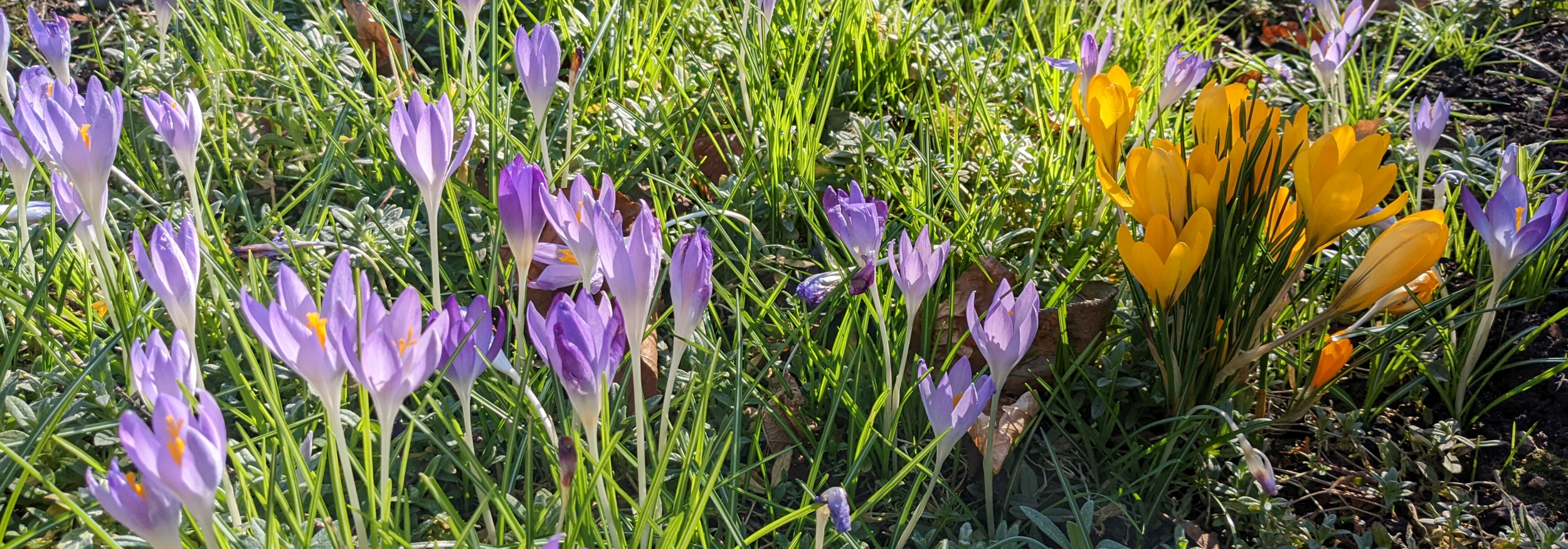Lawns
/1950s Reo Mower advert ‘Go Away Girls’
At this time of the year attention often turns to the lawn. Everything else might be a bit out of control as borders are full of exuberant growth and weeds threaten to take over, but a neatly mowed lawn and trimmed edges make things look so much better. Lawn care can range from the search for perfection - scarifying, aerating, levelling, feeding, weed killing, rolling and reseeding - to my approach, mowing and a bit of spot weeding to deal with the dandelions. Garden centres are full of lawn improvement products designed to persuade us into parting with our money and these are not generally necessary or good for the environment. Unless your lawn has a serious problem with drainage, compaction, neglect or weed infestation, a small investment of time can save money and effort in the long term. Use the cash to buy plants instead!
Assuming most of us have established and relatively problem free lawns, the most important task is regular mowing, probably once a week by June. Cut when dry, and as a general rule no more than 1/3 of the leaf should be removed at each cut. Don’t use a ruler, if the grass looks yellow/pale green after the cut then too much has been taken off! Cutting really low to save time is counterproductive, parts of the lawn can end up scalped and grass is weakened as it cannot photosynthesise efficiently, so leaving space for weed seeds to germinate. In dry conditions and when the grass is fairly short already, clippings act as a natural, free fertiliser. They are not the major cause of thatch or moss, those conditions are due to underlying drainage or shade issues, or if you live in a new home, the appalling treatment of soil by building firms. Some mowers have a handy mulching mode. In wet conditions, when cutting long grass or if the lawn is full of unwanted (especially if full of seed heads) weeds, the clippings are best removed and composted.
the rotary lawnmower was patented by Edwin Budding in 1830
A perfect, weed free lawn is hard work and a quick application of ‘weed & feed’ isn’t the best approach despite the advertising promises – professional lawn care businesses do not weed and feed, they might feed and then consider what weed control is needed. Take a look at the grass in many great gardens, often full of smaller weeds which do not spoil the look of the sward and much better for insect life. In 22 years in my current home, I have never fed the lawn. It contains clover and speedwell which cannot be seen from afar and the former helps to keep it looking green in dry periods. I also now have bee orchids. However, the rosette species such as plantain, dandelion and some thistles do look unsightly and the latter can be rather painful if walking in sandals or barefoot! Dandelions in particular can be a real nuisance, spreading fast and pushing out the slower growing grass. Deal with these as you see them: remove flower heads constantly and either dig the plants up (you could eat them, but I suggest only in moderation, bearing in mind their common French name, pissenlit) or use a selective broadleaf herbicide. The ready to use spot sprays are the only herbicides I use in the garden. Used correctly, they target the weed only, are easy to use, the lawn can be used safely once the spray has dried and they are far better for the environment as are only used when needed. Always pick off flowers first to stop bees visiting the plant – though ‘bee friendly’ versions are now available.
Finally, lawns, unless newly laid, rarely need watering. Grass is remarkably drought tolerant. If we do have a dry & hot summer, raise the blade on your mower and leave the clippings behind. The RHS website gives sensible advice about when and how much to water.



